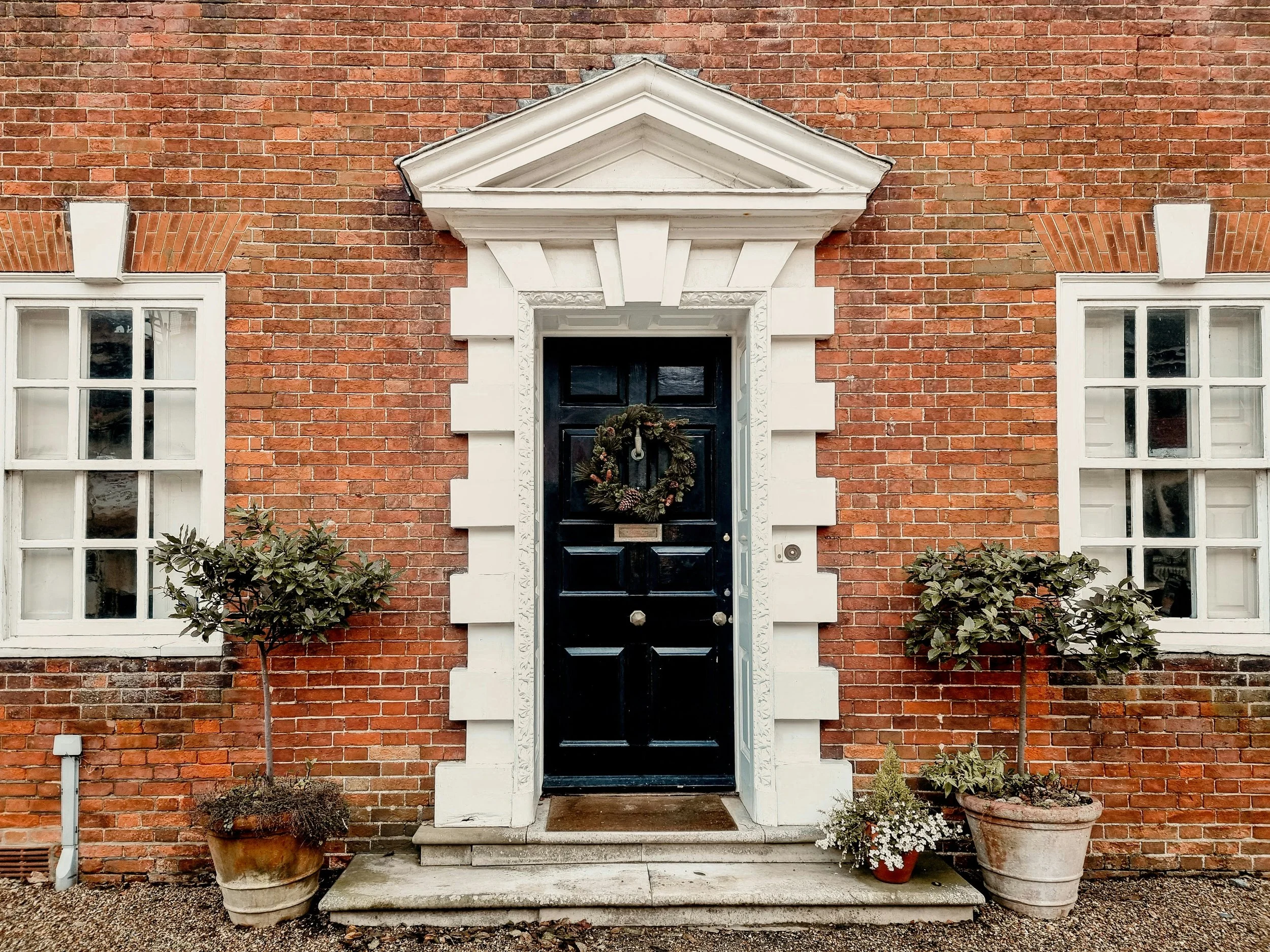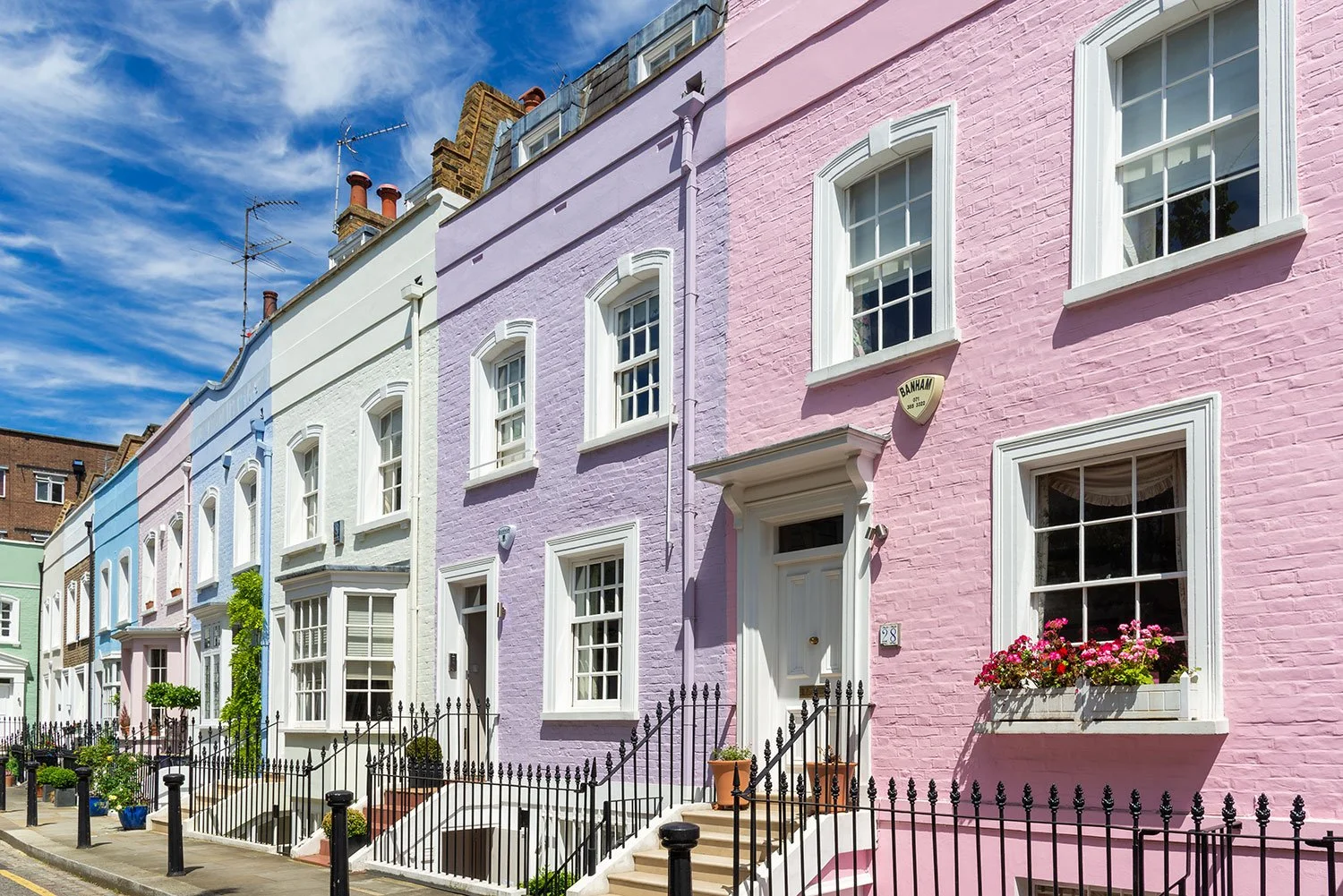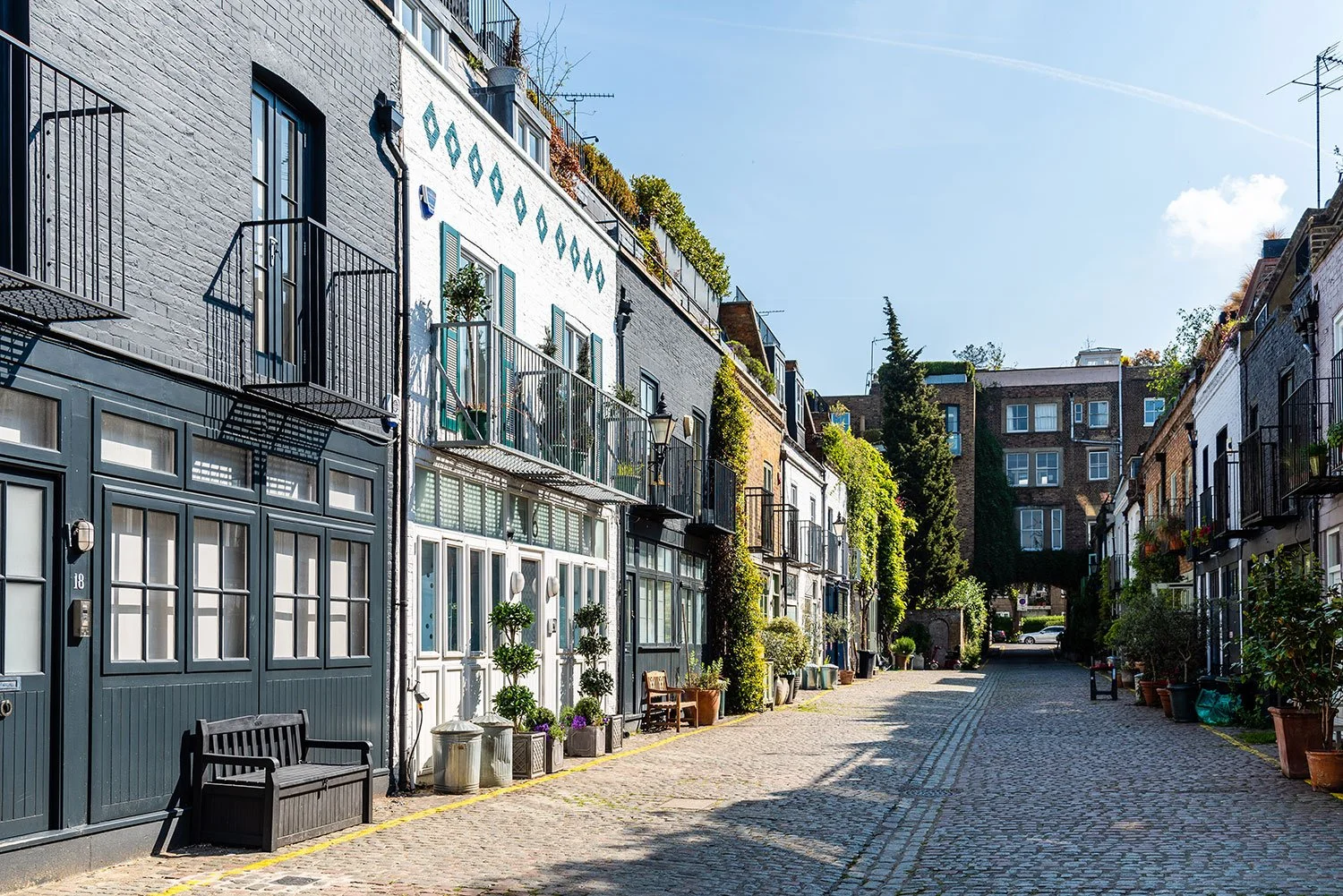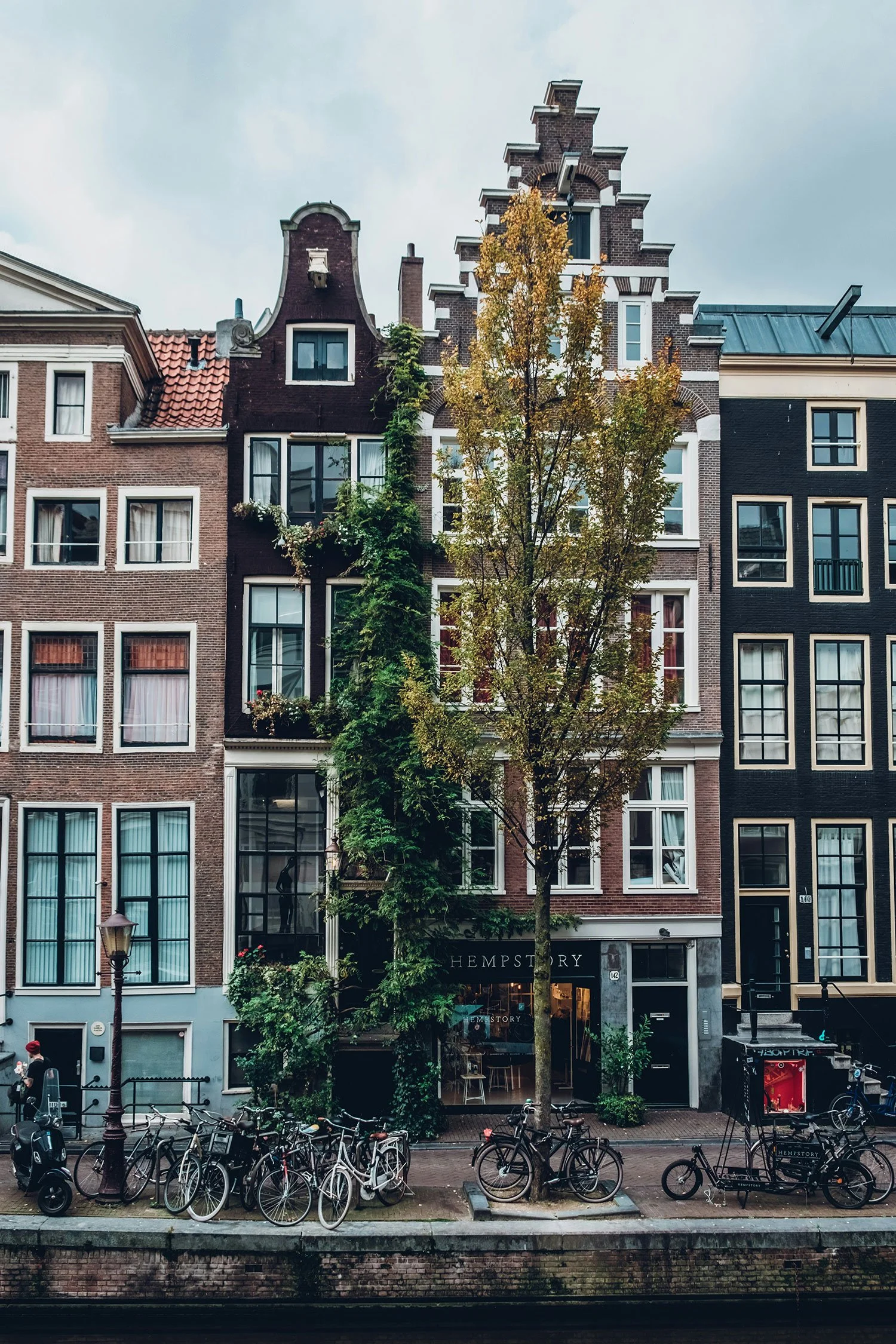The Art of Curb Appeal: Transforming Exteriors
Curb appeal isn’t just about making a home look good - it’s about creating an experience, one that starts long before anyone steps through your front door. Think of it as the opening chapter of a book: it sets the tone, draws you in, and leaves an impression that lingers. Yet, so often, the exterior of a home is treated as an afterthought, a mere box to tick off on a checklist.
But here’s the reality: the exterior of your home speaks volumes. Studies have shown that first impressions are formed in mere seconds, and the appearance of a home’s facade can influence everything from our emotions to our sense of well-being. There’s a reason why some homes make us feel instantly at ease, while others feel cold and unwelcoming.
Historically, curb appeal has always mattered. Think back to the grand Georgian townhouses of London, with their stately doors and wrought iron railings, designed not just to impress but to reflect the homeowner’s status. Or the charming canal houses of Amsterdam, where every facade tells a story, each detail evidence to the city’s commitment to beauty and harmony. These weren’t just aesthetic choices - they were statements of pride, of belonging, of a deeper connection to the place.
In today’s world, however, curb appeal is too often reduced to a quick makeover before a house hits the market. But what if we approached it differently? What if, instead of treating the exterior as a backdrop, we saw it as an integral part of the story a home tells?
Because here’s the thing: curb appeal isn’t just for buyers or neighbours. It’s for you. It’s about creating a space that uplifts you every time you come home, that makes you pause and smile, even on the busiest of days.
Timeless Curb Appeal: This classic Georgian facade showcases the art of creating an inviting entrance. From the perfectly symmetrical windows to the crisp white pediment and the thoughtfully placed potted greenery, every detail elevates the aesthetic charm. Proof that even small touches, like a seasonal wreath, can make a striking impact.
The Science Behind Curb Appeal: How Design Impacts Well-being
Curb appeal isn’t just about appearances – again it’s about how spaces make us feel. There’s a growing body of research showing that our surroundings profoundly impact our mental health, stress levels, and even physical well-being. And when it comes to exteriors, the science is clear: thoughtful design has the power to transform how we experience the world.
Take greenery, for example. Studies have consistently shown that exposure to plants and natural elements can lower cortisol levels, reduce anxiety, and improve overall mood. It’s no coincidence that cities like London, Amsterdam and Copenhagen weave green spaces directly into their urban fabric. From living walls to tree-lined streets, these elements don’t just beautify - they create environments that promote health and happiness.
Lighting plays an equally powerful role. A home with carefully placed exterior lighting doesn’t just look welcoming - it actually triggers a psychological response, signalling safety and comfort. This is why cities like London and Stockholm invest heavily in strategic urban lighting, using soft glows to highlight architectural features and create a sense of warmth. Compare that to harsh floodlights or unlit paths, which can evoke feelings of unease or neglect.
Even colour has its own psychological influence. Warm, earthy tones can make a space feel inviting and grounded, while vibrant hues like blues or greens evoke energy and tranquillity. There’s a reason why the iconic doors of Dublin’s Georgian homes are painted in bold, eye-catching shades: they stand out against the uniform brick facades, creating a delightful sense of individuality.
But it’s not just about the aesthetics. Curb appeal, when done well, can also foster a deeper sense of connection - to your home, your neighbourhood, and even nature. Biophilic design, a concept that integrates natural elements into architecture, has been shown to enhance creativity, improve focus, and boost well-being. Imagine coming home to a facade adorned with cascading ivy, or a front garden filled with fragrant herbs and flowers. It’s not just beautiful - it’s restorative.
A facade that breathes: cascading ivy not only enhances curb appeal but fosters a connection to nature, turning a simple building into a restorative, living artwork.
In Luxembourg, curb appeal often feels like an afterthought - a few planters here, a freshly painted wall there. But what if we took cues from cities that have mastered the art of design as a tool for well-being? What if curb appeal became more than a cosmetic effort, evolving into an approach that prioritized how spaces make people feel?
The science is already there. The challenge is translating it into action, using design not just to impress, but to uplift. Because when we rethink curb appeal, we’re not just designing exteriors - we’re designing experiences.
Lessons from London - How Historic Neighbourhoods Master Curb Appeal
London is a city of layers, where history and modernity coexist in ways that feel seamless and intentional. Its historic neighbourhoods, like Kensington, Chelsea, and Blackheath, offer masterclasses in curb appeal that are as inspiring as they are timeless. These areas prove that the art of creating a visually striking exterior isn’t just about following trends - it’s about crafting spaces that feel alive, enduring, and deeply connected to their surroundings.
Notting Hill’s pastel facades - proof that charm is cultivated, not accidental. A neighborhood where small details, like overflowing window boxes, turn streets into vibrant, living canvases.
Take a walk-through Notting Hill, for instance, where pastel-coloured facades and overflowing window boxes create a streetscape that feels almost cinematic. Here, the charm isn’t accidental - it’s the result of community pride and small, deliberate acts of care. Residents often participate in competitions for the best flower displays, turning ordinary streets into vibrant, living canvases. It’s a celebration of individuality within the context of a cohesive whole.
Then there’s Blackheath Village, where the emphasis on preserving architectural continuity creates a sense of stability and timelessness. Its facades are understated yet elegant, combining traditional brickwork with subtle modern updates. The effect is one of harmony: a neighbourhood that honours its history while remaining relevant and inviting. It’s a stark contrast to Luxembourg’s old village centres, where preservation often takes a backseat to redevelopment.
Chelsea mews exemplify London’s mastery of curb appeal: ivy-covered facades, curated greenery, and harmonious designs that transform even the tightest urban spaces into welcoming sanctuaries.
Kensington and Chelsea, two of London’s most iconic districts, take curb appeal to another level by weaving in green accents at every turn. From climbing ivy to immaculately maintained garden squares, these neighbourhoods show how greenery can soften the urban landscape and create spaces that feel both luxurious and welcoming. Even in tight spaces, planters and potted trees are used creatively to frame doorways and windows, making every facade feel curated and cared for.
A snapshot of Kensington charm: potted trees, wrought-iron balconies, and perfectly preserved details reflect the district’s commitment to elegance and collective identity, where even the streets tell a story.
What makes London stand out is its understanding that curb appeal isn’t just about individual homes - it’s about the collective identity of a neighbourhood. This is why so many of its historic areas have strict guidelines on renovations and external changes. The result? Streets that feel cohesive without sacrificing personality, where every detail - whether it’s a polished brass doorknob or a splash of unexpected colour - adds to the story.
Luxembourg could learn a lot from London’s approach. Imagine if its older village centres were treated with the same respect, with efforts to preserve their unique features rather than replacing them with generic new builds. Imagine neighbourhoods that celebrated their quirks instead of erasing them.
Curb appeal isn’t just about looking good - it’s about creating a sense of belonging, of pride, of connection.
The Netherlands - The Art of Blending Function and Beauty
If there’s one country that knows how to make every square meter count, it’s the Netherlands. Dutch cities like Amsterdam and Utrecht are living proof that functionality and beauty don’t have to be at odds - they can (and should) coexist. When it comes to curb appeal, the Dutch don’t just decorate their streets; they design them to be inviting, purposeful, and utterly unique.
Take Amsterdam’s iconic canal houses, for example. These tall, narrow facades, with their oversized windows and gabled roofs, are a testament to the Dutch commitment to balancing practicality with aesthetics. Each home tells a story - not just of its architecture, but of the people who live there. Window sills are adorned with curated collections of books, plants, or art, inviting passersby to feel a sense of connection, even in the middle of a bustling city.
Amsterdam’s canal houses showcase the perfect marriage of practicality and charm, where curated windowsills and iconic gabled roofs create a sense of connection in the heart of the city.
Then there’s the greenery. The Dutch don’t rely on sprawling gardens or vast lawns to create a connection to nature. Instead, they masterfully incorporate plants into even the most urban settings. Think trellises covered in ivy, bike racks surrounded by potted shrubs, and vertical gardens that transform blank walls into living artworks. These touches don’t just make the streets more attractive - they create spaces that feel alive and breathing.
Dutch streets redefined: thoughtful urban design merges greenery with functionality, creating spaces that invite connection and reflect a deep respect for nature.
But the real genius of Dutch curb appeal lies in its sustainability. The Netherlands leads the way in integrating eco-friendly principles into its designs. From permeable paving that prevents flooding to green roofs that reduce urban heat, the Dutch don’t just make their homes look good - they make them work smarter for the environment.
What’s more, there’s a sense of communal pride in the way Dutch neighbourhoods present themselves. Residents take ownership of their streets, often collaborating to maintain shared spaces. It’s not unusual to see a row of homes with perfectly coordinated planters or a public bench decorated with fresh flowers. This sense of unity extends beyond aesthetics - it fosters a deeper connection between neighbours.
Luxembourg, by contrast, often feels stuck between two extremes: the highly polished modern developments and the neglected charm of its older village centres. The Dutch approach offers a middle ground - one that values history and tradition while embracing innovation and sustainability. Imagine if Luxembourg’s older neighbourhoods adopted similar principles, blending their rustic charm with thoughtful, modern touches.
Because curb appeal isn’t just about impressing others - it’s about creating spaces that make you feel at home, that make you proud to walk down your street. And when it comes to blending function and beauty, the Dutch have set a standard that the rest of us would do well to follow.
Practical Curb Appeal Tips Grounded in Science and History
Curb appeal isn’t just about aesthetics - it’s about creating a space that resonates with both history and modern sensibilities. Whether you’re looking to refresh your home’s exterior or embark on a complete transformation, these tips draw inspiration from timeless principles and cutting-edge research.
1. Start with a Story Every home has a narrative waiting to be told. Draw inspiration from the architectural style or the history of your property. Is it a rustic farmhouse? A mid-century modern gem? Let its unique character guide your choices. For example, Georgian homes often look stunning with bold, jewel-toned doors, while minimalist modern facades benefit from clean lines and neutral palettes. The goal is to highlight the soul of your home, not mask it.
2. Use Colour to Make an Impact Colour is one of the most powerful tools in curb appeal. Studies show that certain hues evoke specific emotions: greens and blues for calm, yellows for warmth, and reds for energy. Take a cue from Amsterdam’s colourful canal houses or London’s iconic red front doors. Even a subtle change, like repainting shutters or trim, can completely transform the mood of your facade.
3. Incorporate Greenery with a Purpose Green spaces aren’t just pretty - they’re good for the planet and your well-being. Choose plants that thrive in your local climate and add depth to your exterior. Vertical gardens and climbing plants are great for smaller spaces, while well-placed pots and planters can frame doorways or windows. Think of how the Dutch use greenery to soften their urban environments - practical and beautiful.
Ornate Elegance: This intricately crafted wooden door exudes timeless character and charm, framed by a beautifully arched stone entryway. The wrought iron grille and decorative carvings add a touch of artistry, while the symmetrical potted plants enhance the curb appeal with natural sophistication. A perfect balance of tradition and design
4. Let There Be Light Good lighting does more than brighten a space - it creates an ambiance. Experiment with soft, warm lighting to highlight architectural features or guide pathways. Uplighting can transform trees and shrubs into nighttime sculptures, while lantern-style fixtures bring a timeless elegance. And don’t forget energy-efficient options like LED and solar lights - they’re kind to both your wallet and the environment.
5. Focus on the Details Sometimes, the smallest changes have the biggest impact. Consider upgrading your house numbers to a sleek, modern style or adding a statement mailbox. Window boxes with seasonal flowers can breathe life into a facade, while a well-chosen welcome mat adds personality to your doorstep.
6. Create a Welcoming Pathway A beautiful path invites people into your home. Use natural stone, bricks, or even gravel to add texture and charm. Flank the pathway with soft lighting or low hedges to create a sense of arrival.
Case Study: How Thoughtful Curb Appeal Transformed London’s Blackheath
Blackheath Village, nestled on the edge of one of London’s most iconic green spaces, is a masterclass in how thoughtful design and a commitment to preservation can elevate an entire community. This isn’t just a story of well-maintained facades - it’s about the interplay between architecture, nature, and a sense of continuity that fosters belonging.
The village’s charm lies in its subtlety. You won’t find flashy modern constructions here. Instead, Blackheath’s appeal comes from its preserved Georgian and Victorian townhouses, each one meticulously cared for. The facades tell a story of continuity, of a community that values its architectural heritage. It’s a stark contrast to the relentless drive for redevelopment seen in places like Luxembourg, where old village centres often fall victim to the wrecking ball.
But Blackheath’s success isn’t just about preserving the past - it’s about how the village interacts with its surroundings. The vast green expanse of Blackheath provides a backdrop that feels both grounding and expansive, offering residents and visitors alike a sense of peace and connection to nature. The streets leading into the village are lined with mature trees, their canopies creating dappled light that softens the urban edges.
This isn’t just about aesthetics - it’s about creating an environment that invites people to linger, to explore, to feel part of something larger. It’s why Blackheath remains one of London’s most sought-after areas. It’s not just a place to live; it’s a place to belong.
Contrast this with the approach often seen in Luxembourg. Too often, the focus is on maximizing space and profit, with little thought given to how buildings fit into their surroundings or serve their communities. The lesson from Blackheath is clear: curb appeal isn’t just about making things look pretty - it’s about creating spaces that resonate with people on a deeper level, spaces that tell a story and stand the test of time.
As Luxembourg continues to grow and change, imagine what could be achieved if old village centres were restored with the same care and attention to detail. If trees and greenery were seen as integral to urban design, rather than optional extras. If every facade told a story worth listening to.
Blackheath is proof that curb appeal isn’t just a cosmetic effort - it’s a reflection of a community’s values. And when done well, it has the power to transform not just homes, but entire neighbourhoods.
Conclusion: Curb Appeal as a Reflection of Values
Curb appeal is so much more than a visual upgrade - it’s a reflection of our values, both as individuals and as communities. It tells the world what we prioritize, how we connect to our surroundings, and what kind of life we aspire to live. When done thoughtfully, it’s not just about impressing others - it’s about creating a space that feels welcoming, inspiring, and uniquely ours.
London’s Blackheath and the Dutch cities of Amsterdam and Utrecht remind us that curb appeal can be both deeply personal and profoundly communal. These places show how small details - a splash of colour, a touch of greenery, a nod to history - can elevate an entire neighbourhood. They demonstrate that thoughtful design has the power to transform not just facades, but the way we experience the world.
Luxembourg, with its resources and potential, stands at a crossroads. It could continue down the path of relentless development, prioritizing profit over personality, or it could take inspiration from places that have embraced the art of curb appeal as a tool for well-being, sustainability, and community pride. The choice is ours to make.
For readers, the message is simple: take a fresh look at your own home’s exterior. What does it say about you? What story does it tell? Whether it’s as small as adding a flower box or as ambitious as reimagining your entire facade, every change matters. Because curb appeal isn’t just about what others see - it’s about how it makes you feel every time you come home.
I believe that thoughtful design has the power to inspire, to connect, and to transform. Curb appeal is just the beginning - a starting point for rethinking how we shape the spaces that shape us. So, let’s stop settling for the ordinary. Let’s aim higher, dig deeper, and create exteriors that reflect the very best of who we are.
written by Helen M. Krauss
Book Recommendations:
"The Decoration of Houses" by Edith Wharton and Ogden Codman Jr.: A classic text on timeless design principles that extend from interiors to facades.
"At Home: A Short History of Private Life" by Bill Bryson: A humorous and insightful exploration of how architecture and design shape our daily lives.
"Soft City: Building Density for Everyday Life" by David Sim: A thought-provoking look at urban design and how thoughtful spaces can transform communities.
"Living in Style: Inspiration and Advice for Everyday Glamour" by Rachel Zoe: While focused on interiors, this book provides ideas that can inspire exterior design choices.
"The Nature of Home: Creating Timeless Houses" by Jeffrey Dungan: Explores how natural materials and thoughtful design create timeless beauty.











